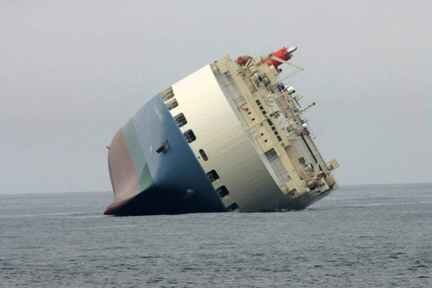
Strategic Thinking & Strategic Action
Fostering strategic thinking and strategic action by organizational leaders since 2007.
Archive
- March 2025
- February 2025
- January 2025
- December 2024
- November 2024
- October 2024
- August 2024
- July 2024
- June 2024
- May 2024
- April 2024
- February 2024
- January 2024
- December 2023
- November 2023
- October 2023
- July 2023
- August 2021
- April 2021
- March 2021
- February 2021
- November 2020
- October 2020
- September 2020
- July 2020
- June 2020
- May 2020
- March 2020
- October 2019
- September 2019
- July 2019
- April 2018
- January 2018
- December 2017
- November 2017
- October 2017
- September 2017
- August 2017
- January 2017
- December 2016
- November 2016
- October 2016
- September 2016
- August 2016
- February 2016
- October 2015
- March 2015
- November 2014
- October 2014
- September 2014
- July 2014
- May 2014
- March 2014
- February 2014
- December 2013
- September 2013
- August 2013
- March 2013
- February 2013
- December 2012
- October 2012
- June 2012
- May 2012
- March 2012
- February 2012
- January 2012
- December 2011
- November 2011
- October 2011
- September 2011
- August 2011
- June 2011
- May 2011
- April 2011
- March 2011
- February 2011
- April 2010
- October 2009
- June 2009
- May 2009
- April 2009
- March 2009
- February 2009
- May 2008
- February 2008
- August 2007
-
Action-oriented bias
- Nov 17, 2017 Trump trap: Action-oriented bias Nov 17, 2017
-
Approach-avoidance
- Sep 21, 2016 Approach or avoid? Sep 21, 2016
-
Bell curve bias
- Mar 28, 2020 We are biased by the bell curve Mar 28, 2020
-
Choice
- Oct 5, 2016 Managing choice Oct 5, 2016
-
Coaching
- Jan 7, 2025 Pick the best: Don’t let the bad drive out the good Jan 7, 2025
- Jan 22, 2024 Coaching and change Jan 22, 2024
- Apr 1, 2021 Let’s not be complacent about our ignorance! Apr 1, 2021
- Mar 10, 2021 So much can go wrong. Here’s how to make it go right. Mar 10, 2021
- Mar 10, 2021 Why settle? Go for the gold! Mar 10, 2021
- Mar 10, 2021 It's time for spring training. Are you ready to play on the A Team? Mar 10, 2021
-
Consensus
- Dec 6, 2016 No consensus for consensus Dec 6, 2016
-
Decision biases cases
- Oct 19, 2020 Short-sighted thinking: The case of the “hot new smartphone” Oct 19, 2020
- Sep 10, 2020 Changing our thinking to feel better. Yes, we do that! Sep 10, 2020
- Oct 24, 2019 Remember, history is written by the survivors Oct 24, 2019
- Oct 22, 2019 Beliefs about a group matter Oct 22, 2019
- Oct 15, 2019 Not knowing we don’t know Oct 15, 2019
- Sep 19, 2017 Case 12: Not missing the opportunity to lose billions Sep 19, 2017
- Aug 29, 2017 Case 11: Getting bitten by not seeing it Aug 29, 2017
- Aug 29, 2017 Case 10: When what worked didn’t work Aug 29, 2017
- Aug 28, 2017 Case 9: The climbers who perished by succeeding Aug 28, 2017
- Aug 28, 2017 Case 8: No accounting for incompetence Aug 28, 2017
- Aug 16, 2017 Case 7: Blind or incompetent? Perhaps both… Aug 16, 2017
- Aug 16, 2017 Case 6: Seeing what he wanted to see Aug 16, 2017
- Aug 13, 2017 Case 5: Getting burned by past successes Aug 13, 2017
- Aug 2, 2017 Case 4: I’m the boss, so I am right! Aug 2, 2017
- Aug 2, 2017 Case 3: The experts were wrong Aug 2, 2017
- Aug 2, 2017 Case 2: The battle that didn’t go as expected Aug 2, 2017
- Dec 12, 2016 Failure without facilitation: The French Canal Disaster Dec 12, 2016
- Oct 26, 2015 Decision traps, flaws and fallacies: Learn from my unexpected big decision Oct 26, 2015
-
Decision making
- Nov 6, 2024 Rise of the poker pros: 10 lessons for great success Nov 6, 2024
- Jan 5, 2024 What’s your magic number? Jan 5, 2024
- Oct 9, 2023 AI revisited: Will it ever make perfect decisions? Oct 9, 2023
- Sep 4, 2019 “The instant of decision is madness” Sep 4, 2019
- Apr 23, 2018 Despite our growing ignorance, we must decide Apr 23, 2018
- Apr 12, 2018 Can “Big Data” deliver “the right decision”? Apr 12, 2018
- Jan 18, 2018 The worst accident: “We’re going!” Jan 18, 2018
- Mar 8, 2015 10 surprising mental traps: Why we make bad decisions Mar 8, 2015
- Mar 10, 2014 Often wrong but never in doubt Mar 10, 2014
-
Decision making biases
- Mar 10, 2021 So much can go wrong. Here’s how to make it go right. Mar 10, 2021
-
Evidence
- Dec 16, 2016 Misuse of evidence can zap your strategy Dec 16, 2016
-
Evolution
- Aug 6, 2016 Smart phones on the savannah Aug 6, 2016
-
Gratitude
- Oct 25, 2017 Thank you for our connection Oct 25, 2017
-
Group decisions
- Nov 15, 2016 #2 error: Not using the group advantage Nov 15, 2016
- Oct 22, 2015 Open up your thinking: Make better decisions in a group process Oct 22, 2015
-
Leadership
- Nov 14, 2016 #1 error: The leader problem Nov 14, 2016
- Feb 1, 2016 Leaders who mislead: A tale of two movies Feb 1, 2016
-
Pre-mortem
- Sep 12, 2016 Thinking “as if” Sep 12, 2016
-
Risk
- Jun 9, 2020 The Black Swan and us Jun 9, 2020
- Jan 10, 2017 The risk of ignoring risk Jan 10, 2017
- Oct 14, 2016 Risk and regret Oct 14, 2016
-
Strategic planning
- Jan 4, 2025 California High Speed Rail to nowhere: Lessons for implementing our plans Jan 4, 2025
- Dec 17, 2024 Why New Year’s resolutions fail: The problem of implementation Dec 17, 2024
- Nov 10, 2024 Are you ready to bat? Nov 10, 2024
- Oct 9, 2024 Drift and big change challenge our success Oct 9, 2024
- Aug 19, 2024 Get real when you plan! Aug 19, 2024
- Apr 10, 2024 Bridge the strategy gap Apr 10, 2024
- Feb 23, 2024 Don't waste your time planning, unless... Feb 23, 2024
- Dec 18, 2023 The secret sauce of successful plan implementation Dec 18, 2023
- Nov 20, 2023 How to build commitment to change, revisited Nov 20, 2023
- Oct 3, 2023 Success Starts With a Big Vision Oct 3, 2023
- Aug 24, 2021 Sometimes you get what you need Aug 24, 2021
- Feb 25, 2021 Do you measure up? Feb 25, 2021
- Jul 28, 2020 Forget business as usual Jul 28, 2020
- Oct 9, 2014 What’s driving your organization? Oct 9, 2014
- Feb 20, 2014 This is not an infomercial Feb 20, 2014
- Feb 11, 2014 The Big Fail Feb 11, 2014
- Mar 12, 2013 Parsimony and planning Mar 12, 2013
-
Strategic thinking
- Feb 11, 2025 What to do when disaster ensues Feb 11, 2025
- Feb 27, 2024 Desirable difficulties Feb 27, 2024
- Jan 13, 2024 Business model question: Produce or provide? Jan 13, 2024
- Jan 5, 2024 What’s your magic number? Jan 5, 2024
- Jul 5, 2023 Think wide to succeed: How will you compete? Jul 5, 2023
- Mar 25, 2014 Flight 370 and strategic thinking Mar 25, 2014
-
Strategy
- Mar 17, 2025 Are you getting your share? Mar 17, 2025
- Feb 24, 2025 Know who you are up against! Feb 24, 2025
- Jan 18, 2025 Be better than the competition Jan 18, 2025
- Jul 23, 2024 Your pricing says it all… But what does it say? Jul 23, 2024
- Jun 23, 2024 We are people, not transactions Jun 23, 2024
- May 22, 2024 Is excellence - or failure - ahead? Answer five questions to know May 22, 2024
- Apr 8, 2024 What do your customers expect? Apr 8, 2024
- Nov 13, 2023 Demand a great brand! Nov 13, 2023
- Oct 31, 2017 Why not plan to be great, like Elon Musk? Oct 31, 2017
-
Success
- Jul 24, 2019 22 principles I have learned from being an athlete Jul 24, 2019
-
Sunk cost fallacy
- Mar 21, 2015 Sunk cost fallacy: Throwing good money after bad Mar 21, 2015

California High Speed Rail to nowhere: Lessons for implementing our plans
A New Year has befallen us, ready or not. Hopefully, you are ready. That is, you - and your organization, if you are a business owner or for-profit or non-profit leader - have a plan in place for the New Year.
Now your challenge it to execute your plan for greater success. Execution, or, as we strategists call it, plan implementation, should be your mantra.
Execution, or better said, lack of it, is where it all falls apart. While the exact percentage is unclear, it’s safe to say that more than half and up to three quarters of plans are either poorly executed or not executed at all. That’s shame! A plan which is not executed is worthless.
Achieving timely and effective plan implementation is critical to success.
To bring the point home, reflect on this true tale that illustrates the perils of poor planning and, especially, poor execution.

Why New Year’s resolutions fail: The problem of implementation
Yesterday, New Year’s resolutions came to mind as I was writing year-end reports to my coaching clients.
A blog post on goal-setting and achievement that I wrote earlier this year, Don’t waste your time planning, unless…, cited research showing that 92% of people who make New Year’s resolutions never actually achieve them. While I recognize that what we resolve to achieve in the New Year can be a casual goal without a lot of commitment behind it, to me it seems silly to put a marker out there and then ignore it or only half-heartedly go after it.

Are you ready to bat?
Just as a batter needs to constantly monitor and process all these variables to make good decisions at the plate, as an organizational leader or business professional you should be keenly aware of what’s going on around you when you step up to bat. For businesses, this process is environmental scanning - which these days involves doing a deep dive on the internet and using AI to identify trends and forecasts that offer ideas on how you might proceed in the future.
Environmental scanning is critical, because the environment in which we all are operating is dynamic. Every day brings change – new opportunities and new challenges.

Drift and big change challenge our success
Every once in a while we stumble across a seemingly profound thought, the “aha!” moment when we see things in a new way, a concept or approach that helps organize, clarify, and make sense out of what we are seeing or experiencing. One of these “aha!” moments in my life as a strategist has led to deep and useful insights that I suggest anyone planning for future success will be wise to consider.

Get real when you plan!
Rather live and plan under the delusion that you know what your situation and prospects are, why not turn to a time-tested method for making sure your strategic plan will be reality based? That time-tested approach is to do a SWOT (strengths, weaknesses, threats, and opportunities) analysis.

Bridge the strategy gap
With the recent collapse of the Francis Scott Key Bridge in nearby Baltimore, bridges are on my mind.
Given my romance with epic bridges, it is no surprise that I have often likened creating a strategic plan to building a bridge to the future.
I have used the bridge analogy for years. As president of the Association for Strategic Planning (now the International Association for Strategy Professionals), more than a decade ago I started my quest to bridge what I (and others) called “the strategy gap.”

Don't waste your time planning, unless...
I deal daily with clients setting goals and assessing goal achievement. That's at the heart of strategy implementation and client success.
My hard-earned guidance: Don't waste your time planning, unless you are prepared set and achieve goals.

The secret sauce of successful plan implementation
I have been working diligently with my clients the last quarter of this year to assure that they have their strategic business plans in place for the New Year.
Each now has a vision of great success, strategies for getting there, and action steps and strategic initiatives laid out for the next 12 months to move them toward their vision.
You might think with their action plan written, my clients are ready to achieve greater success when January 1 rolls around.
Well, without something else, maybe you can call it the special sauce of execution, the odds are too high that they will not implement their plans or that implementation may peter out after a strong start. Just like so many New Year’s resolutions are abandoned.

How to build commitment to change, revisited
Implementing a strategic plan by executing action steps is a large-scale organizational change process. However logical and essential the change seems to those driving it, others will resist change and be a barrier to successful implementation. Gaining and maintaining commitment to the plan and its implementation is a critical step.

Success Starts With a Big Vision
I challenge clients - and you - to pursue a big vision, for your organization, for yourself professionally, and, hey, why not for your own life, as well?

Sometimes you get what you need
Rolling Stones drummer Charlie Watts (middle left in the 1965 photo of the band) died today. He was a great drummer. He was unassuming and did not care much for the flamboyant lifestyles of his peers in the band. Watts quietly focused on his craft for more than 50 years.
But, you ask, what does that have to do with strategy? Let me digress and you soon will see that it has all to do with strategy.

Do you measure up?
We have a problem. We are not wired well for the sustained, organized, separate effort needed to change and grow, to implement our plans, be they strategic or annual.
What I have uncovered on my now six-year deep dive into why we make big decisions poorly and what to do about that huge issue starkly highlights what derails our best intentions in implementing our plans.

Forget business as usual
With the realization that the storm we thought we are weathering is turning out to be a lasting, hard change in the business climate, a shorter “fix” is likely only to be the start of what the typical business will need to do to be really successful going forward.
I am suggesting that we go beyond stop-gap and short-term measures. I am suggesting that each of us take our business back to fundamentals, rethink it in light of where we are and likely are headed. I am suggesting that we address the new challenges and opportunities brought on by change and then build that reimagined business for greater success.
Here’s a six-step process for resetting your business in a time of great change.

What’s driving your organization?
Ever notice how some organizations generally seem to be on a positive trajectory, while others are constantly playing catch-up, encountering roadblocks and struggling to get on a better track? Among the former are Proctor & Gamble, General Electric, Southwest Airlines and Oracle. Among the latter are Sears Holdings, BlackBerry and Sony. Looking deeper, you may also notice that some of the organizations that appear to have their act together at times have had to do a major reset to get back on an upward path. Examples that come to mind are IBM moving to services, Starbucks going back to basics and Apple pushing beyond its Mac niche market and launching the iPod. As the leaders of struggling companies will attest, it's a very difficult task to right a sinking ship. Where to focus and what to do are paramount issues. Obviously, business as usual is not working and incrementalism is not the answer. We have come up with a set of questions that we think every organizational leader should ask.

This is not an infomercial
For my recent Association for Strategic Planning strategy webinar and for my next book, I have been taking a hard look at the large body of research that has been conducted on the benefits of strategic planning and strategic management. Scores of studies have been published in recent decades, many definitive, some inconclusive. What I've seen previously has generally supported strategic planning and strategic management as important for promoting survival and extending organizational longevity, producing growth, and increasing financial results.

The Big Fail
Let’s start with the best news. Strategic planning is the number one most used business tool globally! 45% of organizations use it, according to Bain & Company’s annual survey of executives. It has scored at or near the top for years. (Bain & Company Management Tools Survey, 2013) Here's some more good news. 58% of organizational leaders say strategic planning is extremely or very important in their organization’s success. That’s according to Forrest Consulting's 2013 Strategic Leader Survey, conducted last year of 314 for-profit and non-profit organizational leaders in decision-making roles, which tracked closely with the results of a similar survey we conducted a year earlier and with a 2006 McKinsey & Company survey. But, unfortunately, the reality is not nearly as good as it might seem. Organizations of all types are not living up to their potential.

Parsimony and planning
A recent dialogue with a strategic planning expert as practiced by the U.S. Army raised the issue of planning efficiency.
